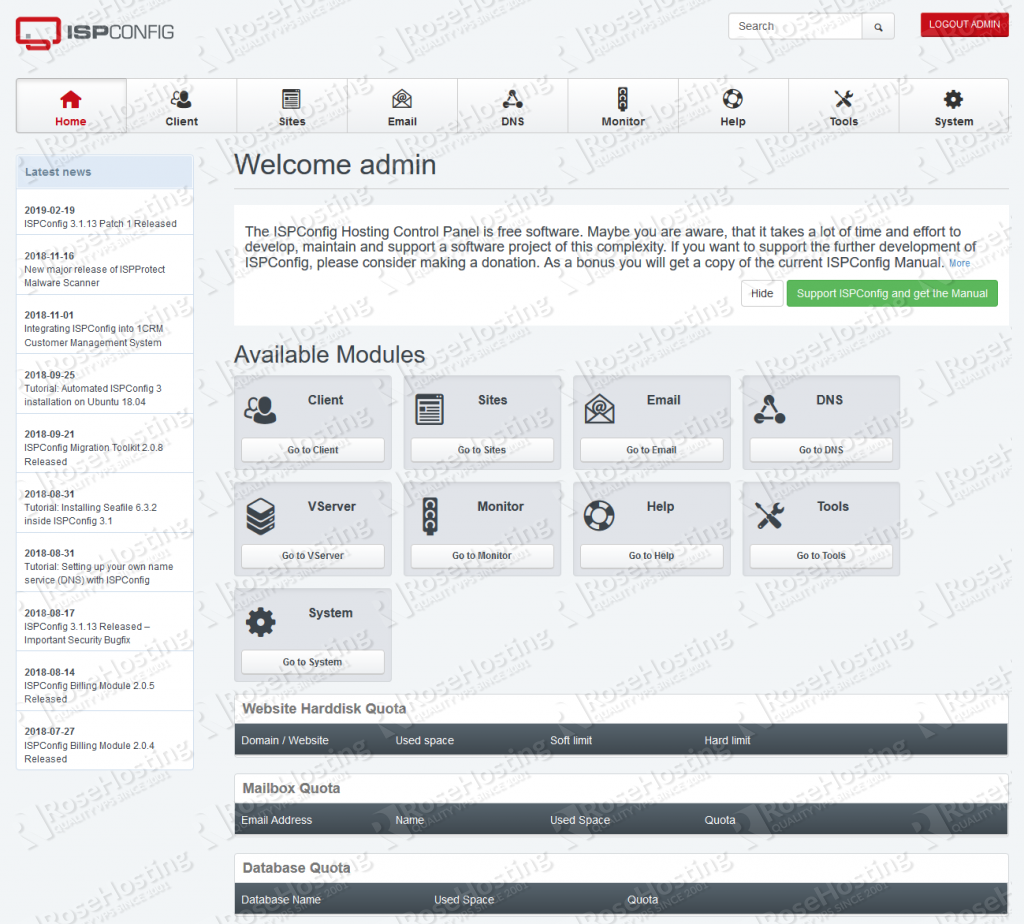

CentOS Web Panel Demo New Root Admin Panel Login: The latest version of CWP is 0.9.8.651 and was released on 21st April 2018, which includes few bug fixes regarding loading time improvements. Thare are lots more features offered by CWP, that you can check out here.

Has been attached to this so you can view it (if it isn't spam) or label

Identified this incoming email as possible spam. X-Spam-Report: Spam detection software, running on the system "", has X-Spam-Subject: XJS*C4JDBQADN1.NSBN3*2IDNEN*GTUBE-STANDARD-ANTI-UBE-TEST-EMAIL*C.34X To test the setup, simply send a test email with subject XJS*C4JDBQADN1.NSBN3*2IDNEN*GTUBE-STANDARD-ANTI-UBE-TEST-EMAIL*C.34X to any email account available on the mailserver and you should see the following lines in the email header: X-Spam-Flag: YES Headers add "Subject: $h_old-subject"Īnd restart Exim for the changes to take effect using: # systemctl restart exim Next, create the following Exim system filters in /etc/exim/filters: # vim /etc/exim/filters Warn add_header = X-Spam-Score: $spam_score ($spam_bar)\n\ # Unconditionally add score and report headers So, make a backup of your current Exim configuration file using: # cp /etc/exim/nfĪdd_header = X-Spam-Note: SpamAssassin invocation failed OK, next thing to do is to configure Exim to utilize Spamassassin for scanning and tagging unsolicited emails as SPAM. Next, check if spamassassin is listening on localhost (127.0.0.1) on port 783 using ss from iproute2: # ss -tnlp | grep spamd Update spamassassin rules using: # sa-update -nogpg With all that in place, proceed with starting spamassassin up and adding it to your system’s startup using systemctl # systemctl start spamassassin Once it’s installed, edit /etc/mail/spamassassin/local.cf using your favorite editor and set the following: # vim /etc/mail/spamassassin/local.cf SpamAssassin is available in CentOS 7 base repository, so you can easily install it using yum: # yum install spamassassin Once you’re in a screen session, update your CentOS 7 VPS using yum as in: # yum update Ssh to your server and initiate a screen session using the command below: # screen -U -S exim-spamd You can follow our great article on how to setup a mailserver with Exim and Dovecot on a CentOS 7 VPS if you don’t have Exim setup already on your Linux VPS. It is a very intelligent email filter which uses a diverse range of tests to identify unsolicited bulk email and apply the tests to email headers and content to classify email using advanced statistical methods.īefore proceeding any further, make sure you have a mailserver with Exim setup on your SSD virtual server. It is a software program released under the Apache License 2.0 used for e-mail spam filtering based on content-matching rules. Once the set-up is completed, SpamAssassin will be able to scan and mark the emails detected as SPAM. In the following tutorial we are going to cover the procedure of installing and integrating SpamAssassin with Exim on a CentOS 7 Linux VPS.


 0 kommentar(er)
0 kommentar(er)
